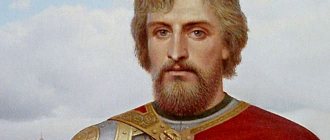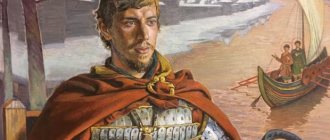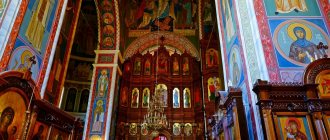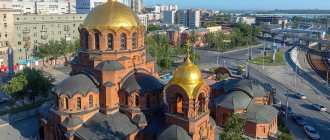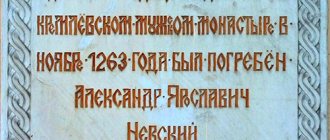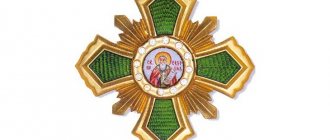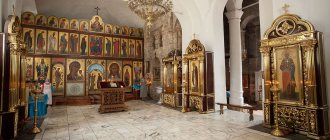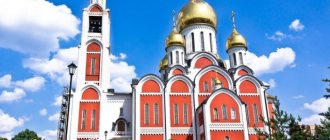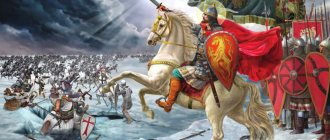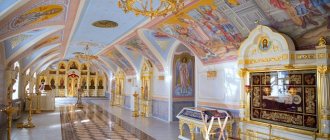Directions:
From the Prospekt Vernadskogo metro station by buses No. 793, 788 From the Yugo-Zapadnaya metro station by buses No. 688, 785 From the Kuntsevskaya metro station by buses No. 688 and 688k
Social activities
Church of St. blgv. book Alexandra Nevsky takes care of the city clinical hospital No. 31, which is a multi-building, multi-disciplinary medical complex equipped with the most modern medical equipment, operating since 1970 and designed to provide medical services to up to 40 thousand patients a year. The hospital employs about 900 people, some of whom regularly visit the chapel of St. Luke, Archbishop of Simferopol, located on its territory since 2013. For us, this is a great honor and opportunity to spiritually help those who selflessly work in the field of serving their neighbors.
In the Church of the Holy Blessed Prince Alexander Nevsky there is a 24-hour collection point for things in need : large and low-income families, other socially vulnerable segments of the population, as well as social assistance centers and shelters in the Tula, Nizhny Novgorod, Tver regions.
A little history
The Alexander Nevsky Cathedral was founded in 1864 in memory of the visit to the Nizhny Novgorod fair by Emperor Alexander II. The first two projects were rejected for technical reasons, the third, of unknown authorship, was approved. So in 1868 the construction of the temple began. It was decided to locate the cathedral around the main spherical space and frame it with four octagonal tents. The iconostasis, with a record height of 23 meters, was painted by Moscow masters. In 1881 the temple was consecrated. The most revered shrines here are a piece of the Life-Giving Cross and the miraculous icon of the Mother of God. During Soviet times, the cathedral was closed, but, fortunately, it was not destroyed, and its restoration began only in 1983. In 2009, the temple received the status of a cathedral. Most of the restoration work has been completed, but actual restoration continues.
Among the revered icons of the cathedral are the icon of the All-Merciful Savior (a copy of the 14th century icon), the icon with a particle of the relics of Alexander Nevsky, the reliquary icon of the Matrona of Moscow, the icon of the holy noble princes Peter and Fevronia.
Temple Information
The idea of erecting a temple at MGIMO was born in 1999. It was initiated by teachers and students of the university. In 2005, the construction was blessed by His Holiness Patriarch of Moscow and All Rus' Alexy II, and then it was decided to dedicate the temple to the blessed prince Alexander Nevsky. The dedication of the temple is not accidental. The blessed prince Alexander Nevsky is one of the most famous heroes of Russian history and one of the most revered saints in Rus'. He is the patron of not only the Russian army, but also diplomacy. His brilliant foreign policy activities and originality of strategy in relations with both Europe and Asia still arouse the interest and admiration of researchers. Alexander Nevsky was an example of a statesman who always trusted in the will of the Lord. Throughout history, Russian soldiers asked the holy defender of our state for help on the eve of the most dangerous battles: in 1380 - before the Battle of Kulikovo, in 1812 - during the Battle of Borodino, in 1941 - when the Germans approached Moscow.
In January 2007, by decree of His Holiness Patriarch Alexy II, priest Igor Fomin, at that time a cleric of the Kazan Cathedral on Red Square, was appointed rector of the temple. The process of collecting documents was delayed, and only in 2011, thanks to the Program for the Construction of Orthodox Churches in Moscow, the emergence of a church at MGIMO finally became possible. The fact of historical continuity of the new temple significantly helped the positive solution to the issue of land allocation. The fact is that approximately in this place, on the banks of the Samorodinka River, there was already a temple in honor of St. Nicholas the Wonderworker. The first mention of it dates back to the middle of the 14th century. In 1907, a small stone church was built in honor of St. Nicholas the Wonderworker, accommodating up to 300 people. After the revolution, it suffered the fate of many thousands of other churches - closure in the 1930s and gradual destruction. The ruins of the temple were finally demolished quite recently, in the late 1970s, when during the construction of the Olympic Village in the Zamorodinka Valley they decided to organize a park area. So, in addition to the obvious need for a temple both for MGIMO students and teachers, and for residents of the area, in this case we are also talking about restoring historical justice.
In the summer of 2012, a temporary temple was built in honor of St. St. Nicholas the Wonderworker is one of the largest temporary churches in Moscow: one hundred and seventy-six square meters. On September 1, 2012, the first service took place in front of a large crowd of people in a temporary church at MGIMO. A prayer service to the holy noble prince Alexander Nevsky, the patron of the Russian army and national diplomacy, was performed by the rector of the parish, Archpriest Igor Fomin. And less than a month later, on September 30, 2012, the first Divine Liturgy was celebrated in the temporary church. Since then, services in the temple have been held regularly.
Cathedral in honor of the Holy Prince Alexander Nevsky
Throne
- Main - in honor of the holy noble prince Alexander Nevsky (December 6, September 12)
- The right side chapel is in honor of the Myrrh-Bearing Equal-to-the-Apostles Mary Magdalene (August 4)
- Left chapel - in honor of St. Nicholas, Miracle Worker of Myra (December 19, May 22)
- The upper chapel is in honor of St. Macarius of Zheltovodsk (August 7)
Shrines
- Icon of the All-Merciful Savior The icon of the Savior was painted in 2008 by cathedral icon painters and is an exact copy of the 14th century icon, which is located in the Church of the Resurrection of Christ in the city of Tutaev, Yaroslavl region.
- Belt of the Blessed Virgin Mary The cathedral contains an embroidered belt that was attached to the honorable Belt of the Blessed Virgin Mary, which was in the cathedral from November 4 to 6, 2011. Over the course of three days, more than 250 thousand people venerated the great shrine of the Christian world.
- Icon of the Holy Blessed Prince Alexander Nevsky The icon of the cathedral's patron was presented as a gift by His Holiness Patriarch Alexy II of blessed memory on November 3, 2005 after the all-night vigil. In 2008, during the visit of Archbishop George of Nizhny Novgorod and Arzamas to St. Petersburg, with the blessing of Metropolitan Vladimir of St. Petersburg and Ladoga, a particle of the relics of the holy prince was donated to the cathedral.
- Icon of the Hieromartyr Cyprian and the Martyr Justinia The icon with particles of the holy relics of the Hieromartyr Cyprian and the Martyr Justinia was brought in April 2005 by the hierarch of the Cypriot Orthodox Church, Metropolitan Neophytos of Morphia and donated to the Nizhny Novgorod diocese.
- Icon of the Holy Blessed Matrona of Moscow The icon with a particle of the relics of the blessed Matrona was painted in the icon-painting workshop at the cathedral in 2010. In 2012, holy relics were placed in the icon. Next to the icon there is a chest into which believers drop notes with requests to Mother Matrona.
- Icon of the Holy Blessed Princes Peter and Fevronia The icon of the Holy Blessed Princes Peter and Fevronia, the Murom miracle workers, was painted and consecrated in 2009, at the same time the honest relics of the saints of God were put into the icon.
- Icon of the Saints of the Nizhny Novgorod Land The icon of the Council of Saints of the Nizhny Novgorod Land was painted in 2008 for the first celebration of the Council of Nizhny Novgorod Saints, which took place on September 14, 2008 in the Alexander Nevsky Cathedral. On the same day, the ruling bishop performed the rite of consecration of the icon. Subsequently, particles of the relics of those Nizhny Novgorod saints who remain as honest relics on Nizhny Novgorod land were put into it.
- Icon of the Solovetsky Saints The icon of the Venerables Zosima, Savvaty and Herman, Solovetsky wonderworkers, was painted in 2012 for the offering of shrines to the Solovetsky Monastery from January 27 to February 10, 2013. These days, in the basement of the cathedral, the exhibition “Solovki. Golgotha and Resurrection." Before the opening of the exhibition, the abbot of the monastery, Archimandrite Porfiry, donated the holy relics of the Solovetsky wonderworkers to the cathedral in honor of the holy noble prince Alexander Nevsky, after which they were placed in the icon.
- Icon of the Venerable Herman of Alaska The icon of the Venerable Herman of Alaska was painted in 2011. In the same year, Metropolitan Jonah of All America and Canada donated a particle of the saint’s relics to the Nizhny Novgorod diocese.
- Icon of the Holy Blessed Grand Duke George Vsevolodovich The icon of the founder of Nizhny Novgorod, Holy Blessed Grand Duke George Vsevolodovich, was painted in the icon-painting workshop at the Alexander Nevsky Cathedral in December 2009. In the same year, on December 16, a particle of the holy relics of the blessed prince was brought from the Vladimir diocese and placed in the icon.
- Ark with the relics of the Russian saints Saints Athanasius Sakharov, Theophan the Recluse of Vyshensky, Ignatius Brianchaninov, Joasaph of Belgorod, Mitrophan of Voronezh, Tikhon of Zadonsk, Dimitri, Metropolitan of Rostov, Pitirim of Tambov, John of Tobolsk, Philaret, Hieromartyrs Thaddeus of the Uspensky, Peter (Zverev), Righteous Alexy Mecheva , Venerable Alypius.
- Ark with the relics of the venerable Optina elders Reverend Confessor Raphael, venerable Joseph, Barsanuphius, Macarius, Anatoly, Leo, Ambrose, Hilarion, Nektarios, Anatoly.
- Ark with the relics of the Great Martyr Panteleimon A piece of the holy relics was transferred to the cathedral from the Panteleimon Monastery of Holy Mount Athos in 2014.
- Ark with the relics of Hieromartyr Hilarion of the Trinity. A particle of the holy relics was transferred to the cathedral in 2012 from the Sretensky Monastery in Moscow.
- Ark with the relics of St. Euthymius of Suzdal A particle of the holy relics was transferred to the cathedral from the city of Suzdal. The release of a particle of holy relics was timed to coincide with the 700th anniversary of St. Euthymius, which was prayerfully celebrated in 2016.
- Ark with the relics of St. John of Damascus A particle of the holy relics was transferred to the cathedral in 2014 by the Greek Orthodox Church.
- Ark with the relics of the righteous Alexy Bortsurmansky A particle of the holy relics was transferred to the cathedral in 2014 by the Lyskovsky diocese of the Russian Orthodox Church from the village. Bortsurmans.
- Ark with the relics of St. Seraphim of Sarov A particle of the holy relics was transferred to the cathedral in 2005 from the Holy Trinity Seraphim-Diveevsky Monastery.
- Ark with the relics of St. Macarius of Zheltovodsk A particle of the holy relics was transferred to the cathedral in 2005 from the Holy Trinity Macarius Zheltovodsk Monastery.
- A slipper from the venerable relics of St. Spyridon of Trimythos. The shrine was transferred to the cathedral in 2012 from the island of Corfu.
- Icon of St. Nicholas the Wonderworker with a particle of relics
- Icon of St. Sergius, abbot of Radonezh, wonderworker, with a particle of relics
- Icon of Pius and Placis with particles of relics
- Icon of the Venerable Martyr Princess Elizabeth and Nun Varvara with particles of relics
- Icon of the Novoselsky Martyrs with particles of relics
Story
Architects: Lev Vladimirovich Dal and Robert Yakovlevich Kilevein. Consecrated in 1881, re-consecrated in 1992, and in full rites in 1999.
The Cathedral in the name of the Holy Blessed Prince Alexander Nevsky rises on Strelka - the traditional venue for the Nizhny Novgorod fair. It is visible both from the upland and trans-river parts of the city, and from the fairway of the Volga and Oka rivers. The grandiose height of the cathedral (87 m) still provides it with third place among Russian churches after the Cathedral of Christ the Savior in Moscow and St. Isaac's Cathedral in St. Petersburg.
Its history began in the mid-50s of the 19th century, when the central Spassky Cathedral in the fair trade complex of Kunavinskaya Sloboda could no longer accommodate all the believers, and the merchants turned to Bishop Anthony with a petition to build a new cathedral, and he, in turn, sent a petition to the governor A. N. Muravyov.
In 1858, on the Kunavinskaya Sloboda in the Nizhny Novgorod Fair shopping complex, it was decided to build a temple in the name of the savior and wonderworker Nicholas of Myra, but this proposal was destined to change in the same year. As eyewitnesses recalled, “On August 24, the fair had the good fortune to see Emperor Alexander Nikolaevich, of blessed memory, and Empress Maria Alexandrovna. The merchants were happy with the visit of Their Majesties to the fair. In memory of their devotion to Orthodoxy and the Throne, they decided to build not only a temple that would satisfy the religious needs of traders, but a majestic temple, perpetuating the patriotism of their loyal subjects to their sovereign and their august family. Why, at the meeting on August 24, 1858, the merchants, through their most important representatives, expressed a desire to build three thrones in the proposed temple: the first - in the name of the holy noble prince Alexander Nevsky - the namesake of His Imperial Majesty, the most pious sovereign Emperor Alexander II and His Imperial Highness, the Grand Duke Alexander Alexandrovich; the second - in the name of the holy Equal-to-the-Apostles Myrrh-Bearer Mary Magdalene - the namesake of the Empress Maria Alexandrovna and the third - in the name of the saint and wonderworker Nicholas of Myra - the namesake of the sovereign heir of the Tsarevich and Grand Duke Nikolai Alexandrovich of blessed memory."
At the same meeting, a beginning was made for the implementation of a good deed: a voluntary collection of donations was opened for the construction of the temple. Donations for the first time turned out to be up to 2,000 rubles. Only by 1862 the collected amount of 60 thousand rubles made it possible to begin to implement the plans.
Of all the proposed projects, the construction commission settled on the project of the provincial architect R.Ya. Kileveyna. Archival research has established that the design was based on a drawing of the Annunciation Church of the Life Guards Cavalry Regiment in St. Petersburg, built according to the design of K.A. Tones. The main idea of the project was to connect five tents in one building. However, the estimate, as it turned out, was at least twice the amount planned by the merchants of 100 thousand rubles.
On November 18, 1865, the Sovereign Emperor approved the project, but the construction of the temple began only in September 1867, after the election of a new construction committee, which included people who could provide real help.
The first stone for the foundation of the temple was laid by Grand Duke Vladimir Alexandrovich, who arrived in Nizhny Novgorod on July 15, 1868. In 1869–1870, the walls of the temple were erected and the ceiling was made. Design work continued until the end of construction. In addition to the icons painted by the Moscow icon painter F. A. Sokolov, icons from the Makaryevsky Monastery, liquidated after the fire, were brought to the temple - St. Macarius of Zheltovodsk, the Savior Not Made by Hands and others.
The construction work was led by architects Robert Kilewein and Lev Dahl, whose original design for the New Fair Cathedral remained unfulfilled.
Nizhny Novgorod merchants, the Remizov brothers, supplied lumber and metal products, Zarubin supplied stone. The largest quantities of bricks for the construction were provided by the merchant Dolgopolova, the merchant Rukavishnikov, and the owner of the brick factory, the peasant Petelkin.
In 1880, the construction of the temple was completed, it was transferred to the Nizhny Novgorod diocese and received a staff: priest, deacon, psalm-reader. The main altar of the temple - in the name of the holy noble prince Alexander Nevsky - was consecrated on July 20, 1881.
Since the temple did not have a permanent parish (it was made up of merchants coming to the fair), the main building functioned only during the fair, and was not heated in winter. The winter heated church of Macarius of Zheltovodsk and Unzhensky was located in the protruding western vestibule.
During the period of revolutionary upheavals, the temple experienced a series of persecutions and desecrations. By this time, the Cathedral of the Holy Blessed Prince Alexander Nevsky had become very popular not only among the merchants, but also among the common people. In the temple there was a miraculous icon of the Mother of God and the Life-giving Cross of the Lord, to which many suffering people resorted. According to the authorities, in 1929 the influx of such parishioners into the temple: local housewives and the unorganized population “caused inconvenience.” Therefore, at the end of the year, the valuables were confiscated, and in the winter of 1930, by decision of the leadership of the Volga Flotilla, the iconostases and all the wooden decorations of the cathedral were used for firewood to heat local houses. The parishioners managed to save only a few icons, including the icon of the Mother of God and the Life-Giving Cross, which until recently were in the Vysokovskaya Church.
The project for the reconstruction of the former fairgrounds, developed in the late 20s, included the demolition of the Alexander Nevsky Cathedral and the erection in its place of a lighthouse with a monument to Lenin. But, fortunately, the project ended only with the dismantling of the tents. Subsequently, the cathedral building was used for warehouses and partly for housing. Numerous buildings that completely disfigured the temple housed utility rooms. In the early 1940s, a fire occurred in the cathedral building, destroying its interior and paintings on the ceiling and walls.
During the Great Patriotic War, an anti-aircraft battery stood on the central drum of the cathedral in the name of the Holy Blessed Prince Alexander Nevsky, protecting the Nizhny Novgorod sky from enemy raids.
A new era for the Alexander Nevsky Cathedral began in the 80s of the twentieth century, when, according to the design of architects O. E. Sundieva and I. S. Agafonova, restoration work began to restore the torn down tents. The work proceeded slowly, since it was difficult to find the right metal for the manufacture of ceilings and other tent elements. The workers of the Kulebaki Metallurgical Plant took on the task of completing such a complex order. There were other difficulties at work.
But since 1992, in parallel with the restoration, services have been resumed in the cathedral. Soon an efficient heating system was installed in the temple, and a new iconostasis design was developed. New - because the secret of the old masters, who installed and secured the 23-meter (the size of an eight-story building) iconostasis in the last century, could not be discovered. Much had to be restored from photographs.
And again, before us is the former temple - centric, five-tented, the architectural masses from the porches and side tents grow upward, rushing towards a powerful central tent with a large gilded dome.
In plan, the cathedral has the shape of a “Greek cross”. The cross-domed structure of the temple and a number of details of the facades reflected the official understanding of Russian national religious architecture. This is the last building in the city, built on the basis of the “exemplary” designs of K.A. Tones. The general appearance of the cathedral, the successfully found dimensions and silhouette, the scale of the main proportions place it in one of the first places in importance in the river facade of Nizhny Novgorod.
Both before the revolution and after its second birth, the cathedral in honor of the holy noble prince Alexander Nevsky was a meeting place for honored guests: the august family, Orthodox hierarchs. His Holiness Patriarch Alexy II of Moscow and All Rus' visited the cathedral twice - in 1991 during the transfer of the relics of St. Seraphim of Sarov and in November 2005, when Russia celebrated the national holiday Day of National Unity for the first time.
In three years, the Alexander Nevsky Temple was built and consecrated
In 2013, construction of the temple began. At that time, there was already a suitable project and experienced people capable of constructing the required building.
Quite quickly, behind an airy, transparent fence like a gossamer, a snow-white building with contrasting, dark roofs grew up. It rises in several tiers, tapering towards the top. Its facades are designed with restraint. There is something sublime in this brevity, reminiscent of the purity of heaven or the purity of a righteous soul.
At the very top of the temple there is a single dome in the shape of a candle flame. According to the Orthodox tradition, it symbolizes the one God, and its gilded surface recalls the primacy of the Creator.
After all, the color gold is always associated with royal power, and only the Lord can be called the only king of kings and our entire world.
Temple of Prince Alexander Nevsky
By the way, the “gold” was applied very painstakingly: it was nine thousand ceramic plates (ploughshare). The height of the building is 36 meters. The building will accommodate up to 500 pilgrims. There are the following outbuildings:
- belfry;
- gallery;
- refectory;
- baptismal church;
- buildings for economic purposes.
The finished temple was consecrated in 2016.
Another temple operated on this site since the 14th century; it was destroyed by the Bolsheviks
One of the decisive roles was played by the past of the land where construction was supposed to begin. The fact is that there was already a temple there before. It was erected in honor of St. Nicholas the Wonderworker a long time ago. Documents from the 14th century also mention this structure.
Of course, it has been rebuilt since then - most recently at the beginning of the 20th century. The building at that time could accommodate up to 300 parishioners at a time. It was erected from stone, as reported by the local newspaper.
But the revolution came, the Bolsheviks came to power, and in the 1930s the church was abandoned, and soon it was dismantled, so that not a trace remained of the previous building. Forty years later, a park area was erected on the holy place.
The construction of the Alexander Nevsky Temple is a correction of the mistakes of the past.
Therefore, the construction of a temple on this site is a correction of the mistakes of the past. If there has been a church here since the 14th century, then it is logical to return everything to its original position. This is true.
This argument became decisive for the local authorities, and the project moved forward.
What to see
The cathedral can be seen from almost anywhere in the center of Nizhny Novgorod and from the opposite bank of the Volga. There is no single architectural style visible here: the appearance of the temple combines both classicism and native Volga architectural solutions (so characteristic of buildings, for example, in Yaroslavl). In plan it is a tented temple; The central 72-meter dome is surrounded by four smaller domes. The calm, light facade of the temple in tones of beige and yellow looks exceptionally beautiful against the background of the Volga blue.
In the interior of the temple, you should definitely pay attention to the extensive iconostasis (its restoration is still underway based on surviving photographs) and a considerable number of revered icons: the All-Merciful Savior (a copy of the 14th century icon), an icon with a particle of the relics of Alexander Nevsky, a reliquary icon of the Matrona of Moscow, holy noble princes Peter and Fevronia, the Solovetsky saints and the Saints of the Nizhny Novgorod land, as well as an embroidered belt attached to the Belt of the Virgin Mary while it was in the temple.
On the belfry at the southern entrance to the cathedral, we definitely recommend seeing (and hearing!) the “Cathedral” bell, the height and diameter of which is 4 meters, and its weight is 60 tons.
Schedule of services
The temple is open daily from 8:00 to 20:00
Schedule of services on weekdays:
- 8:00 - repentance and morning service;
- 9:00 - liturgy, and then a memorial service;
- 17:00 - repentance;
- 18:00 - evening service.
Weekend worship schedules:
- 8:00 - repentance and morning service;
- 9:00 - liturgy, and then a memorial service;
- 16:00 - repentance, and after the liturgy to the Savior;
- 17:00 - evening service.
Particularly revered dates:
September 12 - transfer of the relics of Prince Alexander Nevsky;
December 6 is the day of remembrance of Saint Prince Alexander Nevsky.
On the official website of the temple you can read its history and find a lot of interesting information.
You can constantly find new information on the official website of the Alexander Nevsky Cathedral at MGIMO.
Official website of the Alexander Nevsky Temple
First of all, there is a lot of material about the temple itself:
- its history;
- photo gallery from various holidays and important events for the temple;
- news about ongoing events, lectures, matinees, concerts and meetings.
Interior of the Alexander Nevsky Temple
The site administration always keeps you informed about significant dates:
- anniversary of consecration;
- birthdays of people involved in the life of the temple;
- church holidays.
A section on church sacraments and rituals is currently being written. In the future there will be separate articles on confirmation, baptism, ordination, etc.
Of the already existing sections, the pages on social service deserve special attention, where they talk in detail about such organizations as:
- temperance society;
- house of hard work "Noah";
- center for work with the deaf and hard of hearing.
Believers will also be interested in reading personal stories about the spiritual insights of Orthodox Christians like them.
By leaving a comment, you accept the user agreement
Before construction, the social activities of the temple were agreed upon with the clergy.
In 2012, a temporary temple of St. Nicholas the Wonderworker was erected here. It differed from many other similar structures in its significant size. Services were held here, but Orthodox leaders did not stop there.
Temporary Church of St. Nicholas the Wonderworker
Building the temple required preparing the ground—not so much in the literal sense, but in the sense of planning how the temple would fit into the life of the university.
To achieve this, the clergy regularly met with students and teachers. They discussed where the activities of the clergy could be useful. During these conversations, several organizations were identified with which the temple would cooperate primarily:
- City Clinical Hospital No. 31.
- Dmitrovsky orphanage-boarding school for children with physical disabilities.
- Children's Infectious Diseases Clinical Hospital No. 6.
- Boarding house for labor veterans No. 29.
- Local secondary schools.
2013
starting this year there is a Sunday school at the church
Also, one of the primary tasks of the clergy of the Alexander Nevsky Church is caring for large families who find themselves in difficult life situations and need help.
It was understood that the range of tasks would gradually expand.
